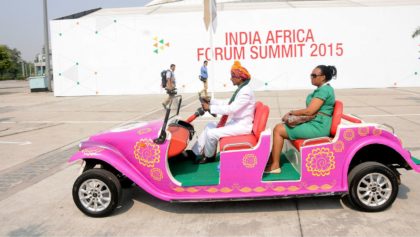Using compressed air to power cars is something people have experimented with since at least 1840. That’s when two French men named Andraud and Tessie tested such a gaseous vehicle on a track. The eco-friendly automobile “worked well,” reports the air-car lobby, which exists, “but the idea was not pursued further. ”
Why not? Perhaps because making a practical, well-working model is damnably hard. But India’s Tata Motors is pushing the technology forward, inch by inch, with its project to build “Airpods” – zero-pollution, cute-as-a-bug smartcars that zip along at 40 m.p.h. via the magic of squeezed air.
Sadly, these vehicles do not function by farting out a loud stream of gas that propels them forth. They instead are built with pneumatic motors that use pressurized air to drive pistons. In the case of Tata, a company that’s developing a line of “nano” cars (including this bulletproof dwarf tank), the engines come from Luxembourg firm MDI, which has been tooling around with air automation for more than two decades.
Tata bought the rights to sell MDI’s creations in India five years ago, but the project’s proven difficult to get popping. But in May, the motor giant announced that it had completed the “first phase” of the Airpod, successfully testing out the engines in two vehicles. The Airpod team presumably is now in Phase 2, polishing up on the hardware in advance of a commercial launch.
So what does this auto of the future look like? Following the smartcar trend, sort of like it stumbled off the set of Disney’s Cars. The mid-sized model fits three passengers, although one must face backward like he’s being punished for something, and is streamlined almost to the point of becoming a sphere. Its tank can hold 175 liters of air, which a driver gets either at a specialized fueling station or by activating an onboard electric motor to suck it in. Its makers say that filling er’ up will cost a paltry €1, and that a full tank of air can last for roughly 125 miles.
Read more: The Atlantic Cities


